
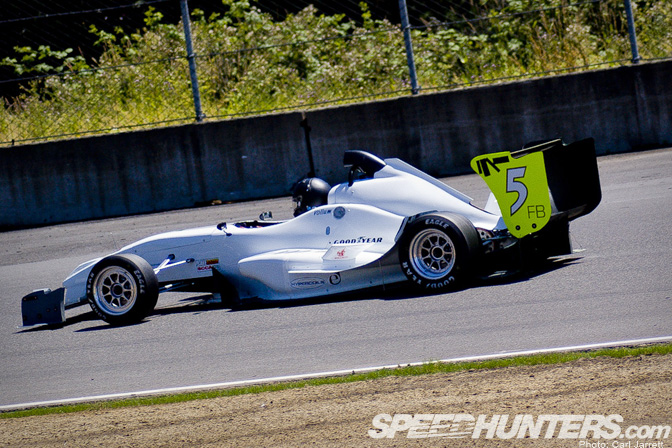
The Stohr F1000 is a fairly new beast to the hotly contested Formula 1000 series run in SCCA Club Racing. First offered back in 2006, the car has undergone a few revisions to bring it to its current state of development. I had the chance to spend some time watching, listening, and observing a few of these cars at the track a few months ago, and they have some nice details I will share with you all. I like to share.
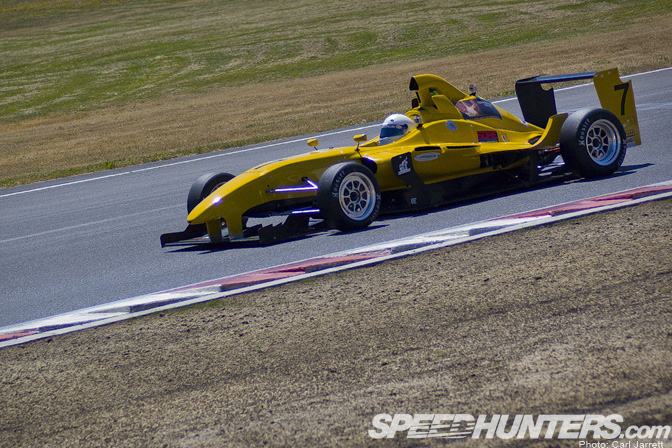
The Stohr car, and other F1000 cars, seemingly takes a fair bit of influence from the higher up Formula's in terms of aerodynamics, namely Formula One.
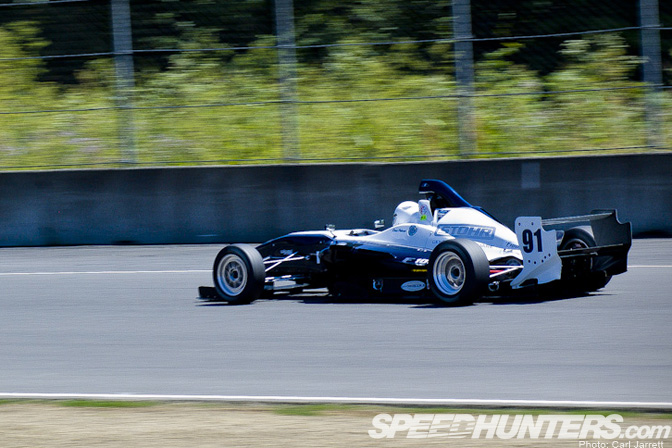
Considering there are untold amounts spent on computation fluid dynamics, straight line tests, and expansive full-size wind tunnels, why not take a page out of their extremely expensive book?
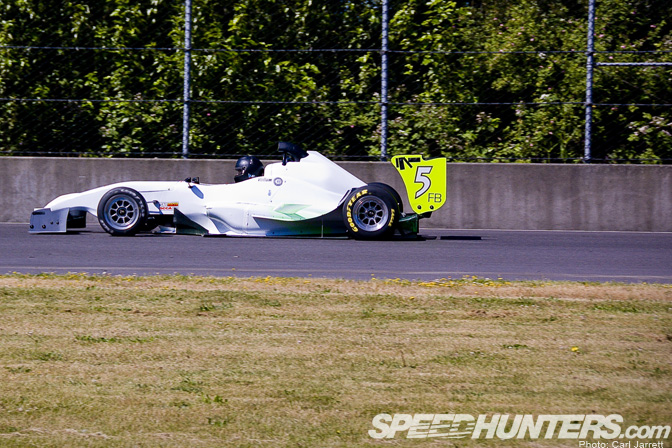
F1000 is one of a handful of race classifications that have a fair amount of freedom for the technical genius to be creative with. The rule set obviously has strict safety guidelines like any class, but has more freedom in terms of aero tuning and overall vehicle set up.
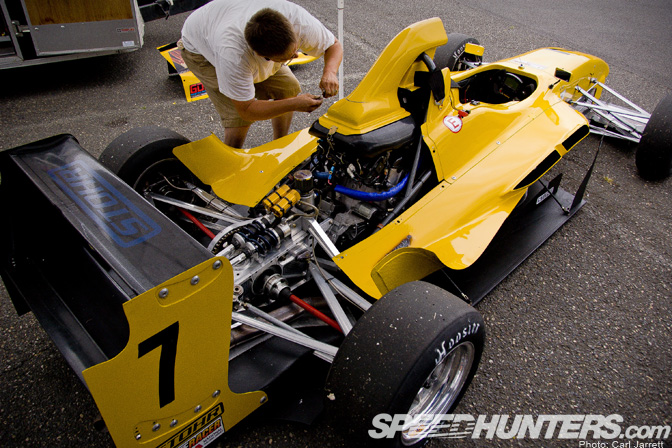
F1000 cars are limited to running a 4 cycle 1000cc motorcycle engine, with stock internals and compression ratio. Keeping these engines somewhat sealed and to spec helps control costs, as fully built race engines get very cost prohibitive quickly when you're competing at the top.
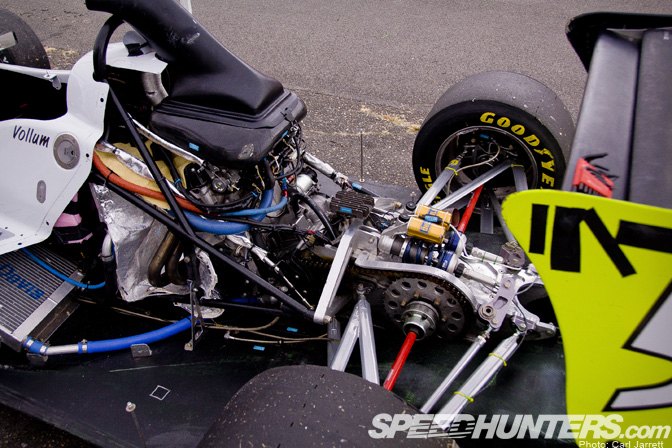
While the rules state that the short block portion of the engine remains untouched, the carburetion or fuel injection is unlimited, meaning any sort of intake manifold/throttle body and fuel injector setup could be run. These Stohr cars run with an F1 style intake plenum most likely giving a good amount of ram air effect considering they are mounted in clean and attached airflow.
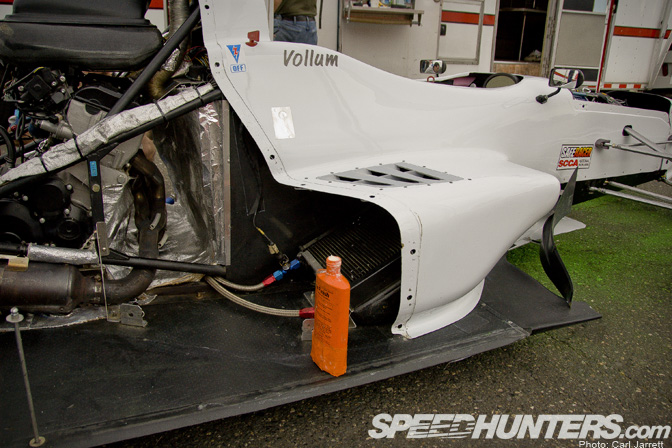
The oiling system and cooling system both run un-restricted. With the Stohr cars running a good sized oil cooler on the right side and an aluminum radiator on the left side both in a canted angle. Mounting the coolers at an angle allows the size of the cooler to be increased for improved cooling, without having to increase the height of the body work on each side. Keeping the bodywork low profile increases the amount of clean air that can travel to the rear wing elements and over the exit of the diffuser.
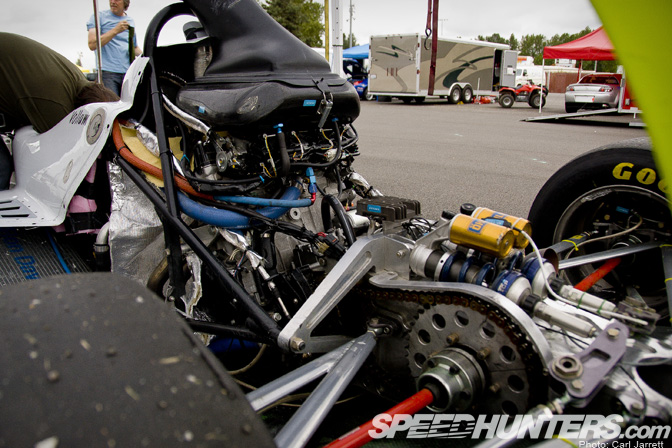
The F1000 cars use sequential motorcycle transmissions; however differentials, final drive gears, chain tensioners, are all open to any design. Shifting must however always be controlled by the driver, so no automatic up-shifting mechanisms are allowed. Keeping costs down but also engaging the drivers to do more during a lap always makes for some fun, gotta keep the drivers busy!
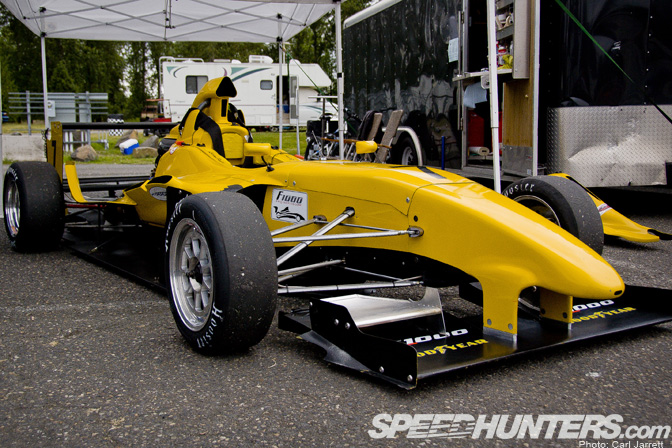
These cars use 13" lightweight centerlock wheels, 8" wide up front and 13" wide in the rear.
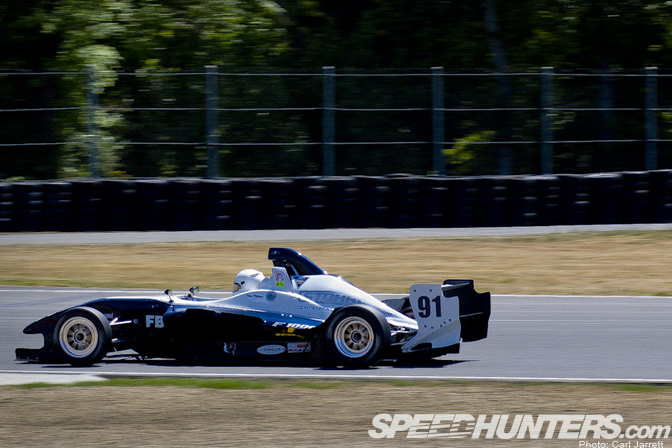
This car runs a slightly different rear wing endplate with some undercuts on the lower side, I assume to again help extract more air out of the diffuser. Also some turning vanes near the main intake help direct air to the center of the car.
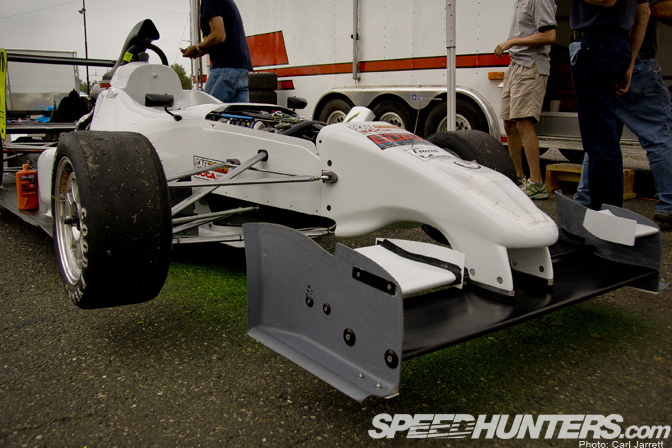
The front wing endplates are interesting as well, with some definite influences from modern F1 cars.
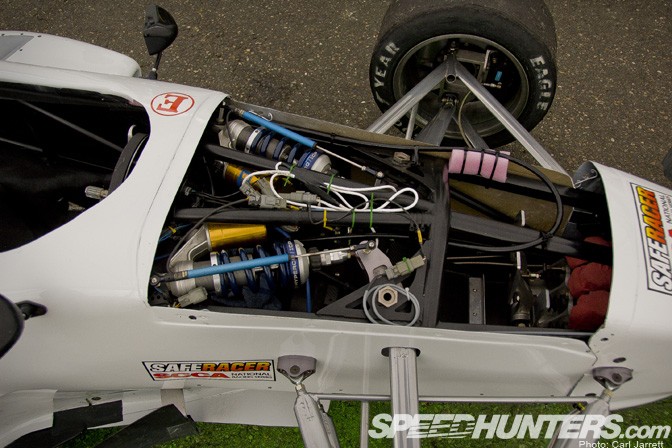
A strong steel tubular chassis protects the driver from collisions, as well as a strong nosecone designed to absorb impacts in front of the drivers' feet.
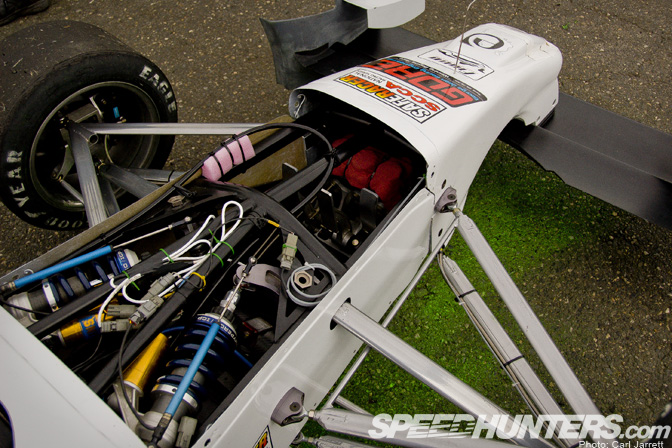
In-board dampers are the norm; you can see the data logging wheel travel sensors mounted just above them as well here. Streamlined suspension members and pushrods help keep the airflow clean around the side of the car.
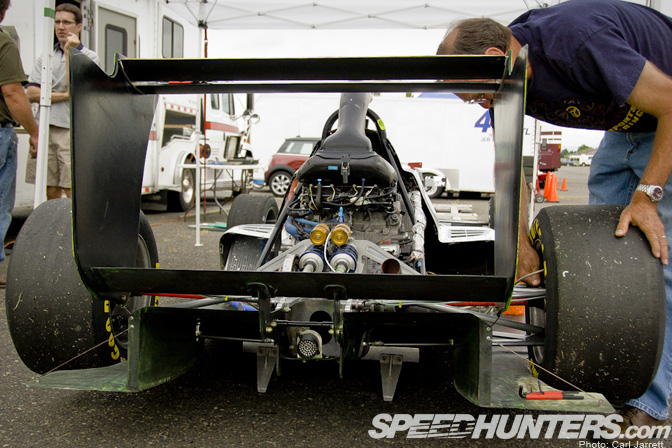
The F1 inspiration is clear out back, with a very modern wing design. Note the lower wing and its proximity to the diffuser. Having the lower wing element close to the diffuser and in-line with the roof of the diffuser basically acts as an extension to the roof of the diffuser, coaxing more of the airflow under the car to expand further and increase ultimate downforce from the underbody.
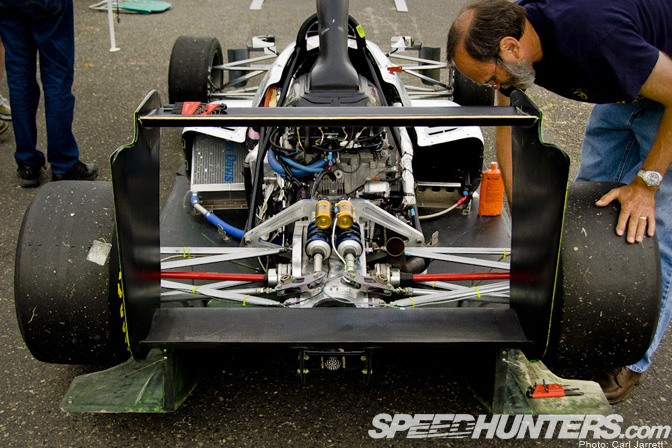
The diffuser floor also extends behind the rear wheels as you can see here. All of this is made from fiberglass, whereas the wings can be built out of carbonfibre.
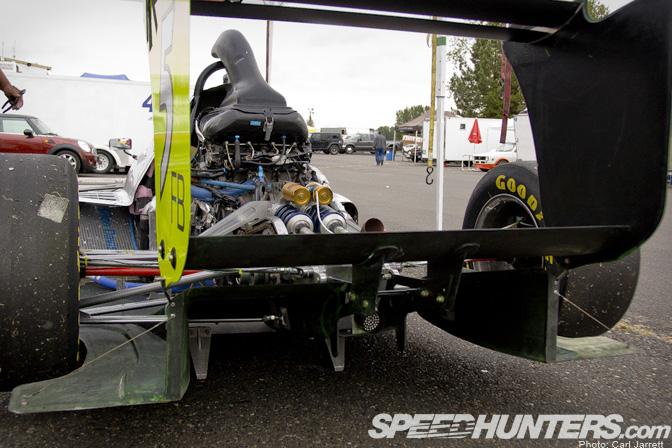
Similar to the front end, all of the rear suspension members are streamlined steel tubing. The lower wishbones pass through the diffuser so it is important they disturb the airflow as little as possible.
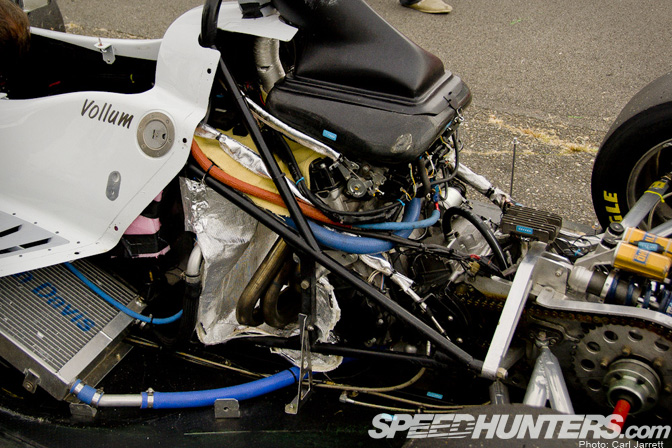
Bike engines are a perfect candidate for lightweight Formula cars like this. The amount of horsepower available from such a small package is hard to find anywhere else.
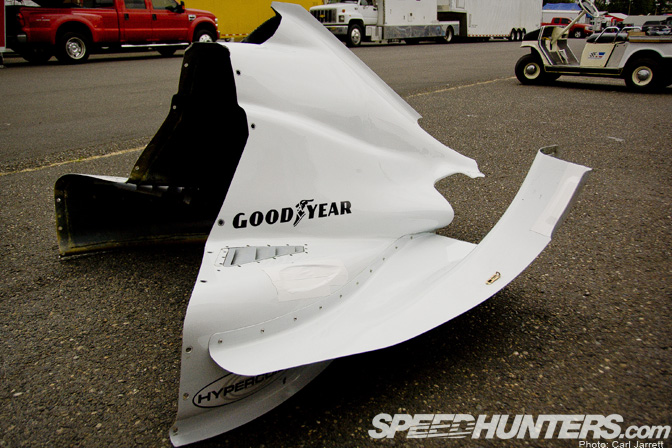
The white car runs a slightly older version of the body work. You can see the rear wheel flip ups clearly here. The wheels and tires on a formula car typically make up the bulk of the aerodynamic drag, which means care and attention is needed (if the rules allow) to direct as much air over and around the wheels as possible.
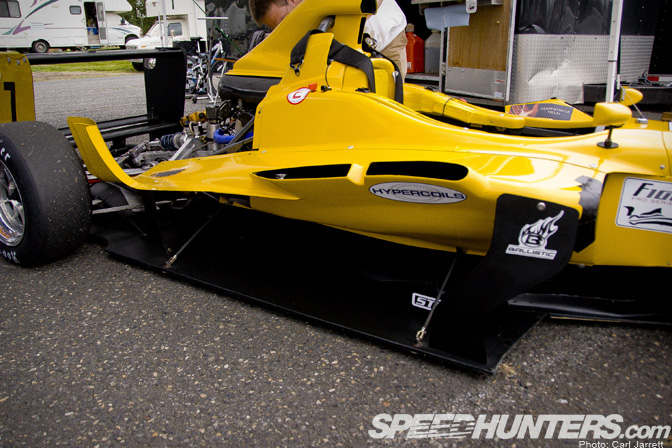
Flat bottom floor utilizes the maximum amount of allowable space as per the rules. You can see the stanchions holding the floor in place and keeping it rigid. There is also turning vane similar to those run on mid 200X era F1 cars to help direct air around the sidepods and towards the rear of the car.
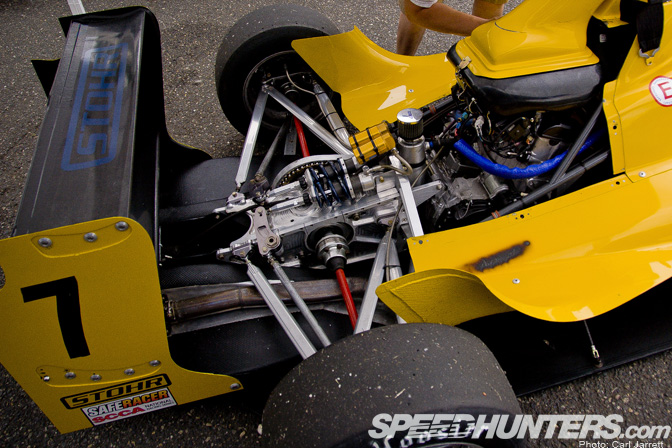
Looks like the exhaust is a little close to the bodywork on this car!
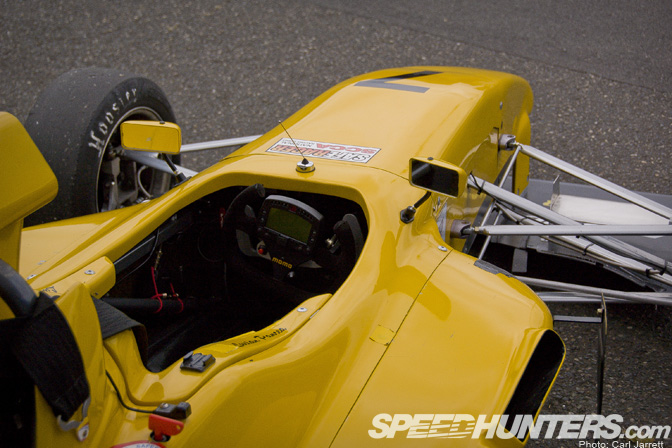
Cockpit looks cozy! I can't imagine my 6'4" 220lb frame would fit in one of these, but it would be fun to try one on.
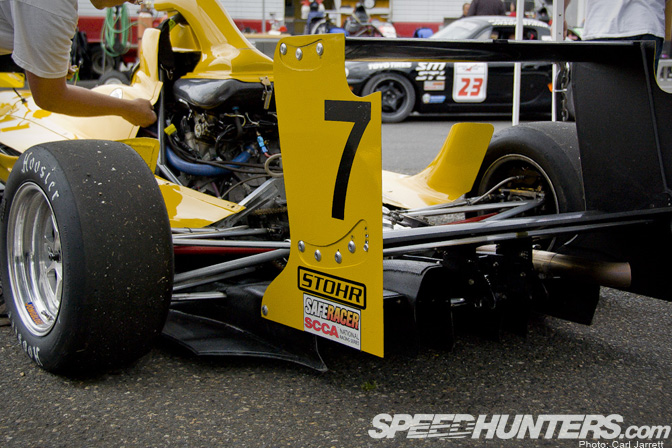
Various wing positions are available to change the wing angle of attack or AoA to suit each track. The mounts for the wings are also countersunk into the large endplates to help reduce parasitic drag, a nice detail not found on all cars of this class. With two long straights, PIR is a fairly low downforce track.
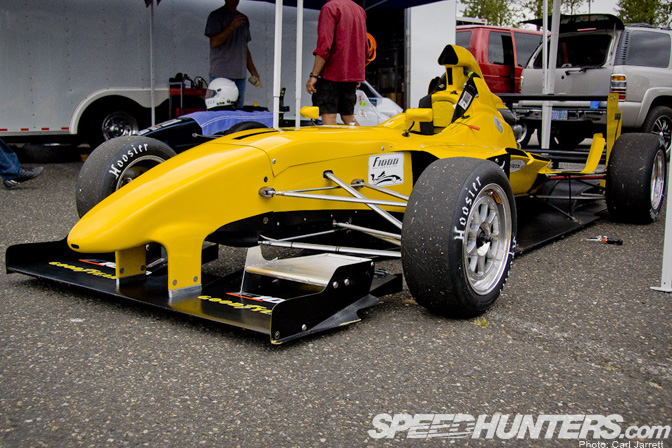
Check out some Stohr F1000 cars in action here, here, and here. Love the sound of those high revving bike engines!






Great article, thanks for going over the technical ins and outs. Really enjoyable read.
Excellent spotlight there sir. i wonder why the white car is blowing the lower element of the wing while the yellow car choose to blow the diffuser.
http://www.abarth1000gsxr.tk

The same but road legal
sick! well intersting
I want to drive it, looks like a fun ride!! Good spotlight!
This looks fun. If I had more time on my hands I would definitely look into this.
mr sandman bring me a dream, make my daily driver an f1000 machine!
Wow... great post and coverage... this is a beautiful machine.... each curve of the bodywork is a work of art
Form>function ??
True form IS IN function! As clearly demonstrated here...
@Peter
lol, wow... that's badass. thanks for sharing
Great write up, would love to see more of this kind of stuff.
Tube frame cars are inherently dangerous as fuck.
I love the sounds those cars make! I wonder how much an endeavor like that costs?
Love it/ Wonder how much it cost to own 1 of these? and what is the upkeep?
as a young man now. I hope to retire and partake in these sorts of activities later in life.
MOAR SCCA COVERAGE. There such an important part of American Car Culture
Brand new rollers ( car w/o 1000cc engine) go for under $50k, used F1000's are available for much less. With 2- 3yr old cars going in the high $ 20k to $ 30k.. Check out the classifieds on www.F1000champ.com
Great article, thanks.